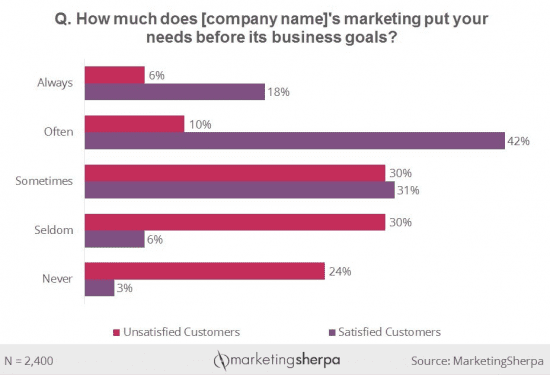Timing is everything in sales. That is why recognizing trigger events is key to being successful.
Getting this crucial step wrong can mean the difference between closing the deal or being rejected.

In this article, we’ll cover what a trigger event is, why they’re important and provide examples you can apply to your own sales strategy.
Skip to:
Sometimes called a “buy signal,” a sales trigger event is an action or occurrence that creates a sales opportunity. These could be industry changes, a new funding round announcement, a merger, or a prospect getting a new role.
Broadly speaking, any industry change can be considered a trigger event and indicate a channel for making a sale. That’s why sometimes it’s difficult to know the difference.
Why Trigger Events are Important
Sales is a time-sensitive profession. You only have a small window of opportunity to make a sale so it’s important you take advantage of it when it opens. Think of trigger events as an opportunity to do just that.
If you contact a prospect right after they buy an expensive competitive product, they're not going to bite.
But if you find out they're in the market for a new vendor, you can reach out to your prospect before they begin researching, which ensures your message will be received with much more interest. This presents an optimal opportunity to make a sale.
Tracking Trigger Events
With the myriad of instances that can be considered a trigger event, you may be wondering how to keep up with all of them. Luckily there are a few places you can set up alerts that will help you discover these events as they arrive.
Track sales trigger events with:
-
Earnings Calls: Earnings calls are open to the public. These quarterly calls can give salespeople an inside peek at publicly owned companies’ performance and future expectations. You can check the company’s investor relations section on their website for the number.
-
SEC Filings: If you sell to publicly traded companies, check out their financial statements that are sent to the Securities and Exchange Commission (SEC). These financial statements can help you determine a company’s financial position and whether or not they can afford to purchase your products or services.
- LinkedIn Alerts: Get a heads up on potential personnel changes with LinkedIn alerts. Set up alerts for when positions at a particular company are open. These can serve as an opening for you to reach out.
-
Google Alerts: Google allows you to track whenever certain keywords are mentioned. Set up alerts for prospect names or business names and get notified whenever they are mentioned in news on the web.
-
Industry Newsletters: Keeping up with industry news can really pay off. These newsletters are often full of potential trigger events as well as keep you informed about industry changes.
-
Social Listening Tools: Social listening tools can notify you if someone is talking about you or your business online. Tools like Buffer and Hootsuite can help you track and get insights from the information pulled.
You'll need to tune into the right channels to detect the sometimes blatant, sometimes subtle shifts that can warm up a cold outreach.
So what do sales trigger events look like? Here are 30 examples of these valuable occurrences and where you can track them.
Sales Trigger Event Examples
1. New Executives
A newly hired member of the C-suite has ample authority and the desire to shake things up. Since they don‘t have established traditions in their new company and are looking to prove their value quickly they’re more open to fresh ideas than most business leaders. It's a perfect time for your pitch.
Track this event with: Google alert for the company name, the company's press releases page, LinkedIn
2. New Job/Role for Current Contact
If a satisfied customer assumes a different position in their company or moves to a new organization, reach out and see if they‘d like to bring your product or service along for the ride. If your offering made them look good in their last role, they’ll be eager to spread the gospel in their new one.
Track this event with: LinkedIn
3. Large Customer Announcement
If your prospect has just landed a significant account, they're about to have a lot more money rolling in. Reach out with a suggestion on how to use some of that cash to their benefit.
Track this event with: Google alerts, press releases page, industry news
4. Company Expansion
A new office location necessitates a glut of new supplies and services. Depending on your product or service, this can be a primary upsell or introduction opportunity.
Track this event with: Google alerts, press releases page
5. Company Relocation
A relocated office is essentially a new office. See above.
Track this event with: Google alerts, press releases page
6. New Product/Service Announcement
By rolling out a new product or service, a company is venturing into uncharted territory. And uncharted territory calls for different types of support -- and potentially new vendors.
Track this event with: Google alerts, press releases page, industry news, social media
7. Competitive Product/Service Announcement
Maybe a competitor beat your prospect to the punch with a new announcement -- or even stole their thunder entirely. You can be sure that if a rival made a bold move, your prospect will be looking to make a bold response. If you can help in that aim, your message will be welcome.
Track this event with: Google alerts, press releases page, industry news, social media
8. Major Competitive Move
This includes any significant activity that falls outside the bounds of a product launch, like a new marketing campaign, piece of advertising, customer win, or leadership change. When one player moves, competitors won't be far behind.
Track this event with: Google alerts, press releases page, industry news, social media
9. Dissatisfaction with Current Vendor
If your prospect is so kind as to announce that their current provider isn't working out, jump on the opportunity. Bear in mind that this could take other forms than a straightforward social media post; look for news articles or legal actions that speak to a souring relationship.
Track this event with: Industry news, social media
10. Bad Quarter
Is the company losing money fast? Do you sell a product or service that could reverse the trend? Introduce yourself.
Track this event with: SEC filings, earnings calls, industry news
11. Good Quarter
Is the company raking in money like crazy? Then they'll be more receptive to projects that could help them continue down the path to success or accelerate their growth. Introduce yourself.
Track this event with: SEC filings, earnings calls, industry news
12. Mergers and Acquisitions
The coming together of two organizations is a golden chance to earn add-on revenue. Spread the use of your product or service, if one party is already a customer, or get an initial foot in the door during a time of new beginnings.
Track this event with: Google alerts, press releases page, industry news
13. Legal Problems
If a company gets penalized for compliance issues, they'll be looking for a product or service that can keep them out of trouble in the future. The salesperson who can swoop in to offer help amidst a disaster will look like a hero.
Track this event with: Industry news
14. Significant Changes in Hiring Velocity
Whether the company is recruiting all the new talent it can get or making massive layoffs, any major shift in hiring can be a worthy trigger event -- depending on what you sell, of course.
Track this event with: Google alerts, industry news, press releases page
15. Major Industry Development
A seismic industry shift will necessitate all in the vertical to take action to capitalize on an opportunity or avoid a risk. If you can help with either goal, reach out quickly.
Track this event with: Industry news
16. New Organizational Strategy/Initiatives
It's hard to get a glance inside a company to see which projects are getting funded and which are being punted to another time or canceled entirely. But if you can glean these insights from a social post or change in social media behavior and position your offering accordingly, buyers will be impressed with your seemingly psychic powers.
Track this event with: Social media, insider correspondence
17. Buyer Opens Your Email
You know when you‘re most top of mind? When a prospect is physically looking at an email you sent. Even though this isn’t so much a trigger event for them as for you, it's still a primary chance to hold their attention while you already have it.
Track this event with: HubSpot Sales
18. New Legislation
When the Affordable Care Act came down, businesses that never previously had to offer health insurance to employees were suddenly mandated to. In order to determine which employees were eligible and which were not, these organizations had to scrutinize the amount of hours employees worked according to very specific rules. And if the company didn't have a sophisticated time tracking system in place? Ouch.
Smart HR technology vendors recognized this opportunity to help companies struggling to implement Obamacare -- and sold a notable amount of new deals in the process. No matter what industry you sell to, it‘s worthwhile to keep a close eye on laws and regulations in case you can be of some aid in your buyers’ time of need.
Track this event with: Industry news
19. Increase in Expenses
Do you sell a product that saves organizations money? Look out for expense curves that rise sharply so you can swoop in to save the day.
Track this event with: SEC filings
20. Change in Price/Availability of Essential Resources/Materials
If a material central to a businesses‘ model suddenly vanishes or becomes cost prohibitive, they’ll be looking for alternate ways to get their hands on it -- or replace it with something else.
Track this event with: Industry news
21. Awards
Recognition within an organization‘s industry or niche feels great. Reach out while they’re riding a high and inform them of how you can help them continue to top their competition -- or even put more distance behind them.
Track this event with: Google alerts, industry news, press releases page
22. Evidence of Interest
If you sell a new kind of car, and a prospect posts an article on Facebook about the benefits of such a vehicle, they're displaying their interest for the whole world to see. Carefully monitor what prospects are posting, sharing, and liking on social networks. And if the topic coincides with what you sell? Pounce on it.
Track this event with: Social media
23. Analyst Report
Every industry has analysts that periodically research and rank companies in their vertical. Once you identify the notable analyst firm(s) in the market you sell to, keep an eye on new research releases. Organizations that rate highly will be looking to capitalize on their status, and organizations that fall to the bottom of the heap will be looking to disrupt the order.
Track this event with: Analyst websites, Google alerts, industry news
24. Entrance Into New Market
New market, new problems to contend with. New problems to contend with, new need, budget, and timeline. The perfect atmosphere for a new sales opportunity.
Track this event with: Google alerts, industry news, press releases page, social media
25. Additional Funding/IPO
Money is scientifically proven to burn holes in pockets. Don't be shy about reaching out to a company that has recently come into some cash to suggest ways to spend it wisely.
Track this event with: Google alerts, industry news, press releases page
26. Event Announcement
Is your prospect putting on a conference, or some other kind of event? If so, they'll need assistance. Offer your help.
Track this event with: Google alerts, press releases page
27. New Critical Positions Created
Don't just pay attention to executive leadership shifts — also watch for new roles that signal new strategies. Keep in mind that people with no predecessors are free to launch their divisions in any way they choose. Get in on the ground floor.
Track this event with: Press releases page, social media
28. Press Coverage
Whether positive or negative, an article from a third-party publication will cast a certain light on a company. Be there to help them double down on a favorable perception or turn around a damaging one.
Track this event with: Google alerts, news
29. Event Custom to Buyer's Industry
Every industry has news that makes huge waves within the category, and registers barely a blip to the rest of the world. Whatever these events are, make sure you're tracking them.
Track this event with: Industry news, social media
Leverage Trigger Events to Make the Sale
Most trigger events aren‘t as obvious as a tweet or LinkedIn post announcing, "I’m looking for a new product for [purpose]. Any thoughts?"
Knowing how to track and identify trigger events will help you capitalize on new opportunities and make your interaction with prospects more relevant to their needs.
Editor's note: This article was originally published in August 2017 and has been updated for comprehensiveness.






































 Thanks to Michael Ray Newman for sharing his advice and opinion in this post. Michael is the CEO of
Thanks to Michael Ray Newman for sharing his advice and opinion in this post. Michael is the CEO of 


